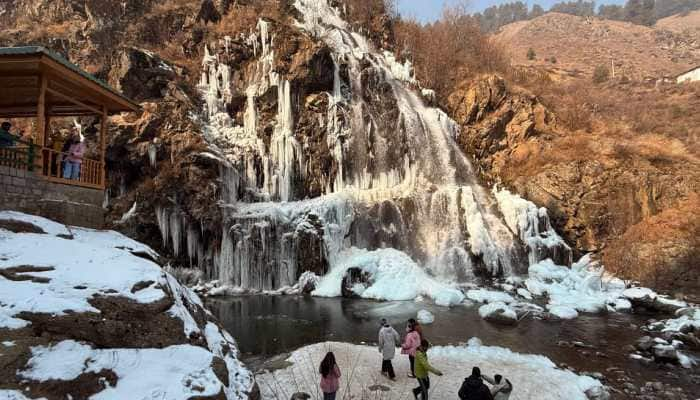'Surprise' discovery! Scientists reveal that Sun's core rotates four times faster than its surface
Scientists had assumed the core was rotating like a merry-go-round at about the same speed as the surface.
Trending Photos
) Image courtesy: ESA/NASA
Image courtesy: ESA/NASA New Delhi: The sun is an enigmatic entity that has long since intrigued scientists and understanding the largest star in our solar system has been one of their priorities.
Time and again, US space agency NASA has released videos and images of the luminous body spewing solar material and oozing plasma on its surface, which makes one wonder what other secrets the gigantic ball of fire may be holding.
NASA's solar observatories are forever at work trying to decipher the ball of fire's smallest of flares. This time, however, NASA's Solar and Heliospheric Observatory (SOHO) and the European Space Agency (ESA) have come across a big discovery that involves the interior of the sun.
After four decades of searching, solar scientists have at long last found evidence of a type of seismic wave in our Sun. Also called g-modes, these low-frequency waves reveal that the solar core is rotating some four times faster than the solar surface.
Scientists had assumed the core was rotating like a merry-go-round at about the same speed as the surface.
"The most likely explanation is that this core rotation is left over from the period when the Sun formed, some 4.6 billion years ago," said Roger Ulrich, a professor at University of California, Los Angeles (UCLA) in the US.
"It is a surprise, and exciting to think we might have uncovered a relic of what the Sun was like when it first formed," said Ulrich, co-author of the study published in the journal Astronomy and Astrophysics.
The rotation of the solar core may give a clue to how the Sun formed. After the Sun formed, the solar wind likely slowed the rotation of the outer part of the Sun, he said.
“This is certainly the biggest result of SOHO in the last decade, and one of SOHO’s all-time top discoveries,” said Bernhard Fleck, ESA’s SOHO project scientist based at NASA’s Goddard Space Flight Center in Greenbelt, Maryland.
The rotation might also impact sunspots, which also rotate. Sunspots can be enormous; a single sunspot can even be larger than the Earth.
The researchers studied surface acoustic waves in the Sun's atmosphere, some of which penetrate to its core, where they interact with gravity waves that have a sloshing motion similar to how water would move in a half-filled tanker truck driving on a curvy mountain road.
From those observations, researchers detected the sloshing motions of the solar core, Ulrich said.
By carefully measuring the acoustic waves, the researchers precisely determined the time it takes an acoustic wave to travel from the surface to the centre of the Sun and back again.
That travel time turns out to be influenced slightly by the sloshing motion of the gravity waves, Ulrich said.
The researchers identified the sloshing motion and made the calculations using 16 years of observations from an instrument called GOLF (Global Oscillations at Low Frequency) on the spacecraft SOHO – a joint project of the European Space Agency and NASA.
The idea that the solar core could be rotating more rapidly than the surface has been considered for more than 20 years, but has never before been measured, researchers said.
“G-modes have been detected in other stars, and now thanks to SOHO we have finally found convincing proof of them in our own star,” said Eric Fossat, an astronomer at the Côte d’Azur Observatory and lead author of the paper describing the result, NASA reported.
“It is really special to see into the core of our own Sun to get a first indirect measurement of its rotation speed. But, even though this decades-long search is over, a new window of solar physics now begins,” he said.
(With PTI inputs)
Stay informed on all the latest news, real-time breaking news updates, and follow all the important headlines in india news and world News on Zee News.
Live Tv







)
)
)
)
)
)
)
)
)
)
